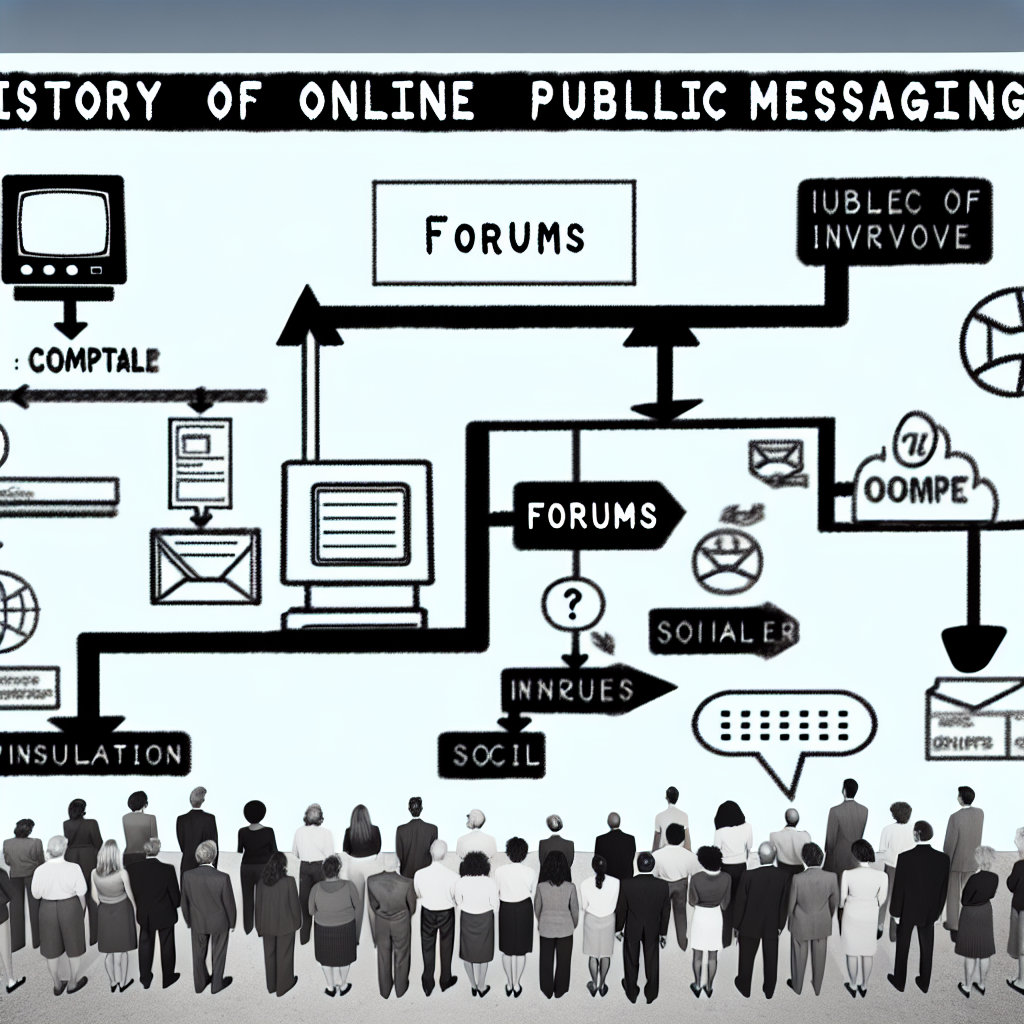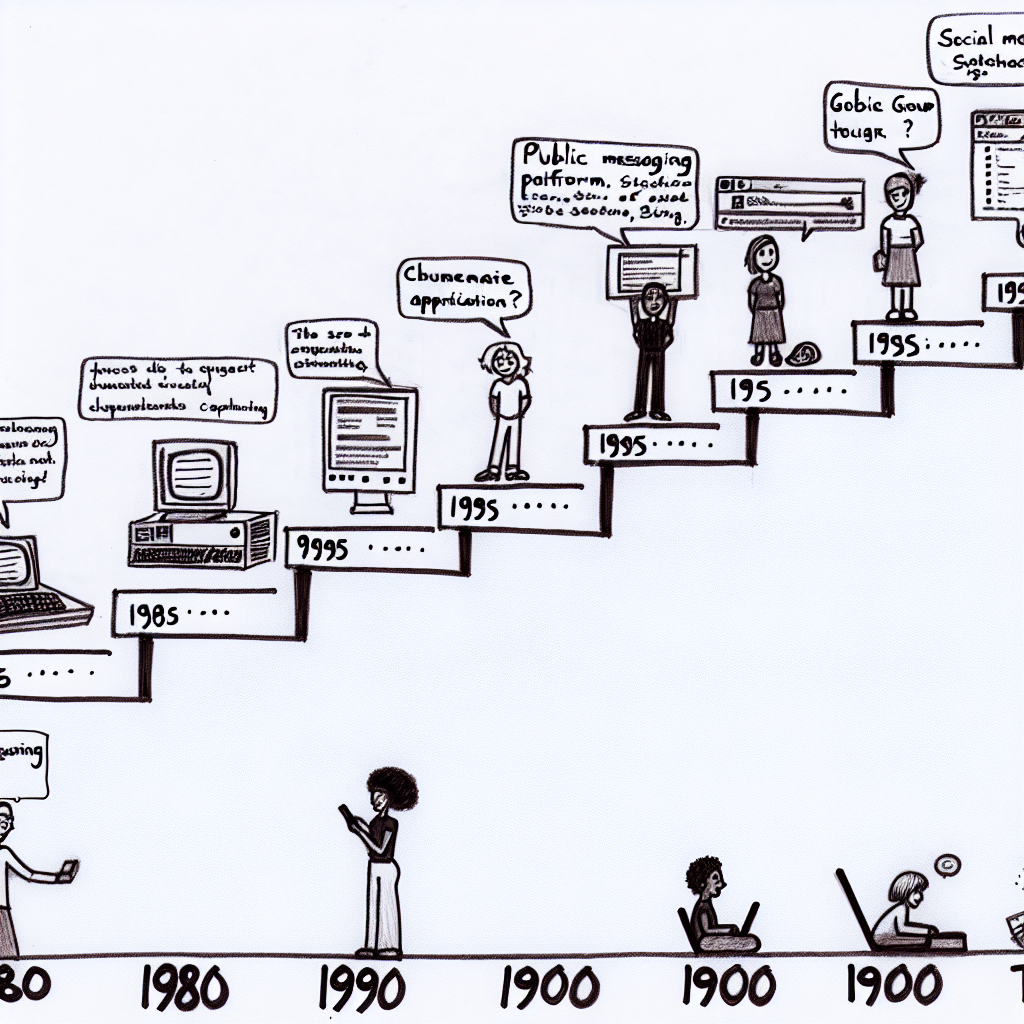The Evolution of Online Public Messaging: From Bulletin Boards to Social Media
The Evolution of Online Public Messaging: From Bulletin Boards to Social Media
In today’s digital age, online public messaging has become an integral part of our daily lives. From sharing thoughts and opinions to connecting with others, the internet has revolutionized the way we communicate. But how did it all begin? Let’s take a journey through the history of online public messaging, from the early days of bulletin boards to the rise of social media.
The concept of online public messaging can be traced back to the 1970s when the first bulletin board systems (BBS) were introduced. These BBSs allowed users to post messages on a central server, which could then be accessed by others. While the technology was limited, it laid the foundation for what was to come.
As the internet became more accessible in the 1990s, online public messaging took a leap forward with the introduction of Usenet. Usenet was a distributed discussion system that allowed users to post messages in various newsgroups. This decentralized approach made it easier for people to find and participate in discussions on topics of interest.
The late 1990s saw the emergence of web-based forums, which further expanded the possibilities of online public messaging. These forums provided a platform for users to create threads and engage in discussions on specific topics. With the ability to include images and multimedia, forums became a popular way for people to connect and share information.
The early 2000s marked a significant shift in online public messaging with the rise of social networking sites. Platforms like Friendster, MySpace, and eventually Facebook allowed users to create profiles, connect with friends, and share updates. These sites not only facilitated personal communication but also opened up new avenues for businesses and organizations to engage with their audiences.
With the advent of smartphones and mobile internet, online public messaging took another leap forward. The rise of instant messaging apps like WhatsApp and Facebook Messenger allowed for real-time conversations, making communication more immediate and convenient. Users could now send text messages, photos, and even make voice and video calls, all from the palm of their hand.
In recent years, social media platforms have become the dominant force in online public messaging. Facebook, Twitter, Instagram, and Snapchat have millions of active users, making them powerful tools for sharing information and connecting with others. These platforms have also evolved to include features like live streaming, stories, and hashtags, further enhancing the user experience.
The evolution of online public messaging has not only changed the way we communicate but has also had a profound impact on society. It has given a voice to marginalized communities, facilitated the spread of information, and even played a role in political movements. However, it has also raised concerns about privacy, cyberbullying, and the spread of misinformation.
As technology continues to advance, it is likely that online public messaging will continue to evolve. Virtual reality, artificial intelligence, and other emerging technologies hold the potential to reshape the way we interact and communicate online. It will be interesting to see how these developments shape the future of online public messaging.
In conclusion, the history of online public messaging is a testament to the power of technology to connect people and facilitate communication. From the early days of bulletin boards to the rise of social media, it has come a long way. As we look to the future, it is clear that online public messaging will continue to play a significant role in our lives, shaping the way we connect, share, and engage with others.
The Impact of Online Public Messaging on Communication and Society

The advent of the internet has revolutionized the way we communicate with one another. One of the most significant developments in this realm is the rise of online public messaging. This form of communication has had a profound impact on both individuals and society as a whole.
Online public messaging can be traced back to the early days of the internet. In the 1980s, bulletin board systems (BBS) allowed users to post messages on a central server for others to read and respond to. While these early systems were limited in scope and reach, they laid the foundation for the online public messaging platforms we know today.
The emergence of the World Wide Web in the 1990s brought about a new era of online public messaging. Internet forums and chat rooms became popular, allowing users to engage in discussions on a wide range of topics. These platforms provided a space for individuals to share their thoughts and opinions with a global audience, fostering a sense of community and connection.
With the rise of social media in the 2000s, online public messaging reached new heights. Platforms like Facebook and Twitter allowed users to share their thoughts, photos, and videos with friends, followers, and the general public. This shift towards more public and instantaneous communication had a profound impact on society.
One of the key effects of online public messaging is the democratization of information. In the past, traditional media outlets held a monopoly on news and information dissemination. With the advent of online public messaging, anyone with an internet connection could become a content creator and share their perspectives with the world. This has led to a more diverse and decentralized media landscape, giving voice to marginalized communities and challenging established narratives.
However, the democratization of information has also given rise to challenges. The spread of misinformation and fake news has become a pressing issue in the age of online public messaging. With the ease of sharing information online, it has become increasingly difficult to discern fact from fiction. This has led to a loss of trust in traditional media sources and a need for individuals to critically evaluate the information they encounter online.
Another significant impact of online public messaging is the blurring of public and private spheres. In the past, individuals had more control over what information they shared with others. With the rise of social media, personal details and opinions are often shared with a wide audience. This has led to concerns about privacy and the potential for online harassment and cyberbullying.
Furthermore, online public messaging has also had a profound impact on political discourse and activism. Social media platforms have become powerful tools for organizing and mobilizing social movements. From the Arab Spring to the Black Lives Matter movement, online public messaging has played a crucial role in amplifying marginalized voices and driving social change.
In conclusion, online public messaging has had a transformative effect on communication and society. From its humble beginnings in the early days of the internet to the rise of social media, this form of communication has revolutionized the way we connect with one another. While it has brought about many positive changes, such as the democratization of information and the empowerment of marginalized communities, it has also presented challenges, such as the spread of misinformation and the blurring of public and private spheres. As we continue to navigate the digital age, it is essential to critically evaluate the impact of online public messaging and strive for a more informed and responsible online discourse.
Exploring the Future of Online Public Messaging: Trends and Innovations
First post: A history of online public messaging
The advent of the internet has revolutionized the way we communicate with one another. Gone are the days of waiting for letters to arrive in the mail or relying on landline telephones to connect with friends and family. With the rise of online public messaging, we can now instantly share our thoughts, ideas, and experiences with a global audience. In this article, we will explore the history of online public messaging and how it has evolved over time.
The concept of online public messaging can be traced back to the early days of the internet. In the 1980s, bulletin board systems (BBS) emerged as a popular way for users to post messages and engage in discussions. These BBS platforms allowed users to connect with one another and share information on a wide range of topics. However, the reach of these systems was limited to those who had access to a computer and a modem.
As the internet became more accessible in the 1990s, online public messaging took on a new form with the introduction of internet forums. These forums provided a space for users to create threads and engage in discussions on specific topics. Users could post messages, reply to existing threads, and interact with one another in a virtual community. Internet forums quickly gained popularity and became a hub for sharing knowledge and connecting with like-minded individuals.
The early 2000s saw the rise of blogging platforms, which allowed individuals to publish their thoughts and ideas in a more personal and long-form format. Bloggers could share their experiences, opinions, and expertise with a wider audience. This marked a shift in online public messaging, as it gave individuals the power to become content creators and share their unique perspectives with the world.
With the advent of social media platforms in the late 2000s, online public messaging took on a whole new dimension. Platforms like Facebook and Twitter allowed users to share short, concise messages with their network of friends and followers. This shift towards microblogging made it easier for individuals to share their thoughts and ideas in real-time, fostering a sense of immediacy and connection.
In recent years, online public messaging has continued to evolve with the rise of multimedia platforms like Instagram and Snapchat. These platforms allow users to share photos, videos, and stories, providing a more immersive and visual way of communicating with others. The introduction of live streaming has also transformed online public messaging, enabling users to broadcast their experiences in real-time and engage with their audience in a more interactive manner.
Looking ahead, the future of online public messaging holds exciting possibilities. With advancements in technology, we can expect to see even more innovative ways of sharing and connecting with others. Virtual reality and augmented reality are poised to revolutionize online communication, offering immersive and interactive experiences that go beyond traditional text-based messaging.
In conclusion, the history of online public messaging is a testament to the ever-evolving nature of communication in the digital age. From the early days of bulletin board systems to the rise of social media and multimedia platforms, online public messaging has transformed the way we connect and share information. As technology continues to advance, we can only imagine what the future holds for online public messaging and the ways in which we will communicate with one another.


